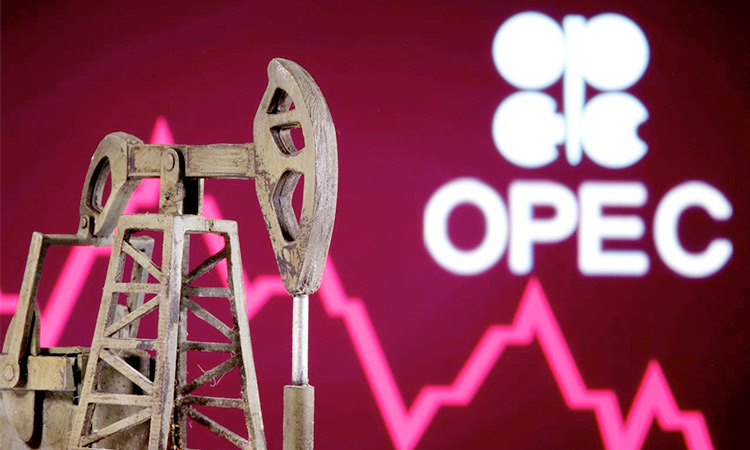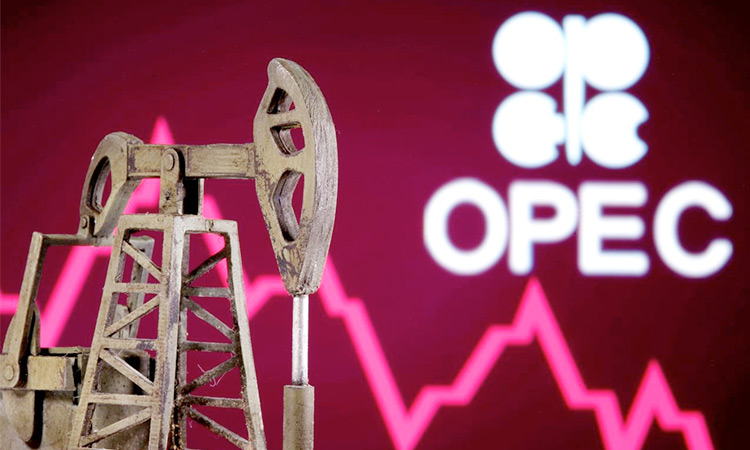Opec sticks to 2024 oil demand growth forecast

Picture used for illustrative purpose only.
World oil demand will rise by 2.25 million barrels per day (bpd) in 2024, compared with growth of 2.44 million bpd in 2023, Opec said in a monthly report.
Both forecasts were unchanged from last month.
A lifting of pandemic lockdowns in China has helped oil demand rise in 2023. Opec has consistently forecast stronger demand growth for next year than other forecasters such as the International Energy Agency.
“In 2024, solid global economic growth, amid continued improvements in China, is expected to further boost oil consumption,” Opec said in the report.
Opec and its allies, known as Opec+, began limiting supplies in 2022 to support prices.
The report also said that demand in the rest of this year and next could take a hit in some parts of the world and trimmed its forecasts for total world demand in the current quarter and the first three months of 2024.
“Looking ahead and despite the usual seasonal rise in heating oil demand, ongoing uncertainty and economic developments in OECD Europe and other areas are expected to impact oil demand in the remainder of 2023 and in 2024,” Opec said in reference to Organisation for Economic Co-operation and Development nations.
The Opec report also said Opec oil production rose in September despite pledged Opec+ supply cuts, driven by increases in Nigeria, Saudi Arabia and Kuwait.
Global stocks up: World shares rose while the dollar and bond market borrowing costs held steady on Thursday, ahead of key US inflation data that will feed the hotly-contested debate on where global interest rates are now heading.
Wall Street futures were pointing to a fifth straight day of gains for the first time since June too, while the dollar was hovering near a two-week low after Fed meeting minutes on Wednesday had shown caution emerging among its rate setters.
News that Central Huijin Investment, a Chinese state fund, raised stakes in the country’s big four banks had also boosted confidence in the broader Asian market as Hong Kong’s heavyweight Hang Seng index jumped 2.0%.
China, however, has also issued a notice prohibiting domestic brokerages and their overseas units from taking on new mainland clients for offshore trading, which will restrict capital outflows, Reuters reported on Thursday.
The recent buoyancy in markets also owes much to comments from Federal Reserve officials suggesting US interest rates - which tend to drive global borrowing costs - may have finally peaked.
Fed Governor Christopher Waller on Wednesday said higher market interest rates may help the Fed slow inflation and allow the central bank to “watch and see” if its own policy rate needed to rise again or not.
Waller has been among the most vocal advocates for higher interest rates to fight inflation, and his view added weight to similar statements this week by Fed Vice Chair Philip Jefferson and Dallas Fed President Lorie Logan.
European trading saw the dollar drifting near a two-week low, but the yen was still under pressure at 149.15 per dollar, just a whisker away from the 150 level that could spur intervention from Japanese authorities.
The minutes of this month’s ECB meeting showed the decision to hike its interest rates again had been a close call, although the euro barely budged on the news.
Capital Economics markets analyst Jonathan Petersen said the dollar’s broad-based rise against most currencies this year left it “somewhat overvalued” and most other G10 currencies “undervalued”.
“We expect the greenback to stay strong as the US and other developed markets slip into recession, and gradually weaken after that,” Petersen said.
Rates markets cut the chance of a Fed hike in November to just 9%, down from just over 13% on Wednesday, and there is a 70% chance that the rate is already at its peak, according to CME FedTool.
With the long-awaited pivot for the Fed in sight, traders are bracing for the all-important US consumer inflation report later. Stakes are even higher than usual after producer price inflation came in hotter than expected on Wednesday.
Economists expect the headline consumer price index (CPI) to haven risen 0.3% in September on a monthly basis, slowing from 0.6% in August. Core CPI is seen holding steady at 0.3%.
Alan Ruskin, chief international strategist at Deutsche Bank, said an upside surprise in the core rate of 0.4% or more would catch investors off guard, although geopolitical risk was likely to deter the bond market from trading too bearishly on stronger data.





